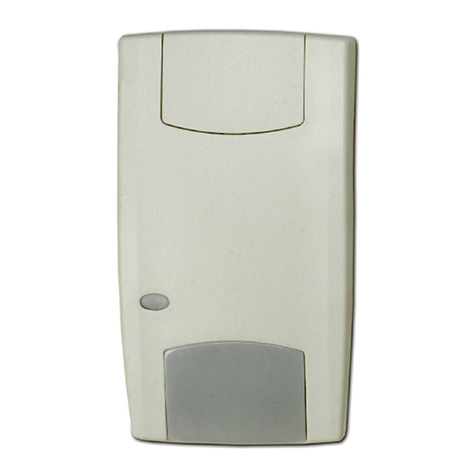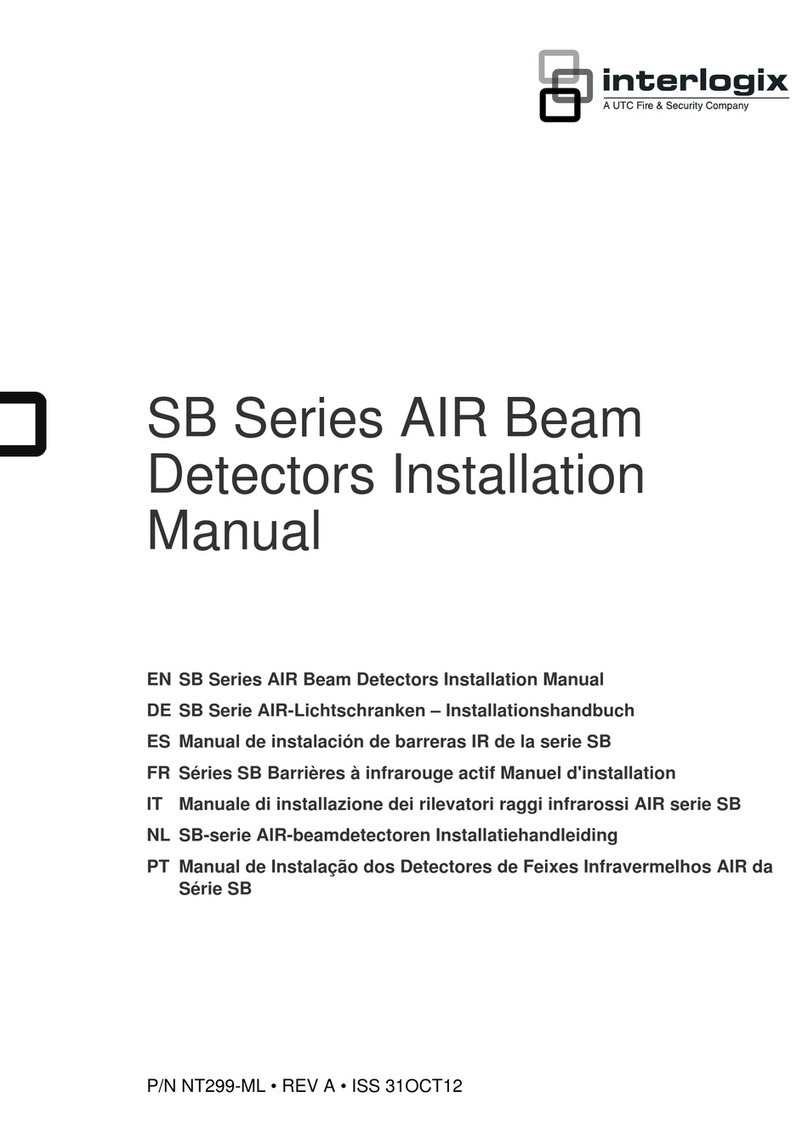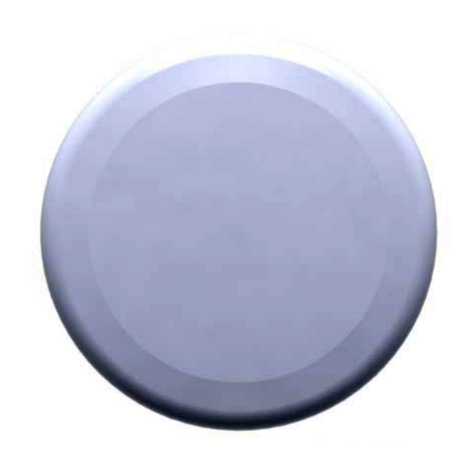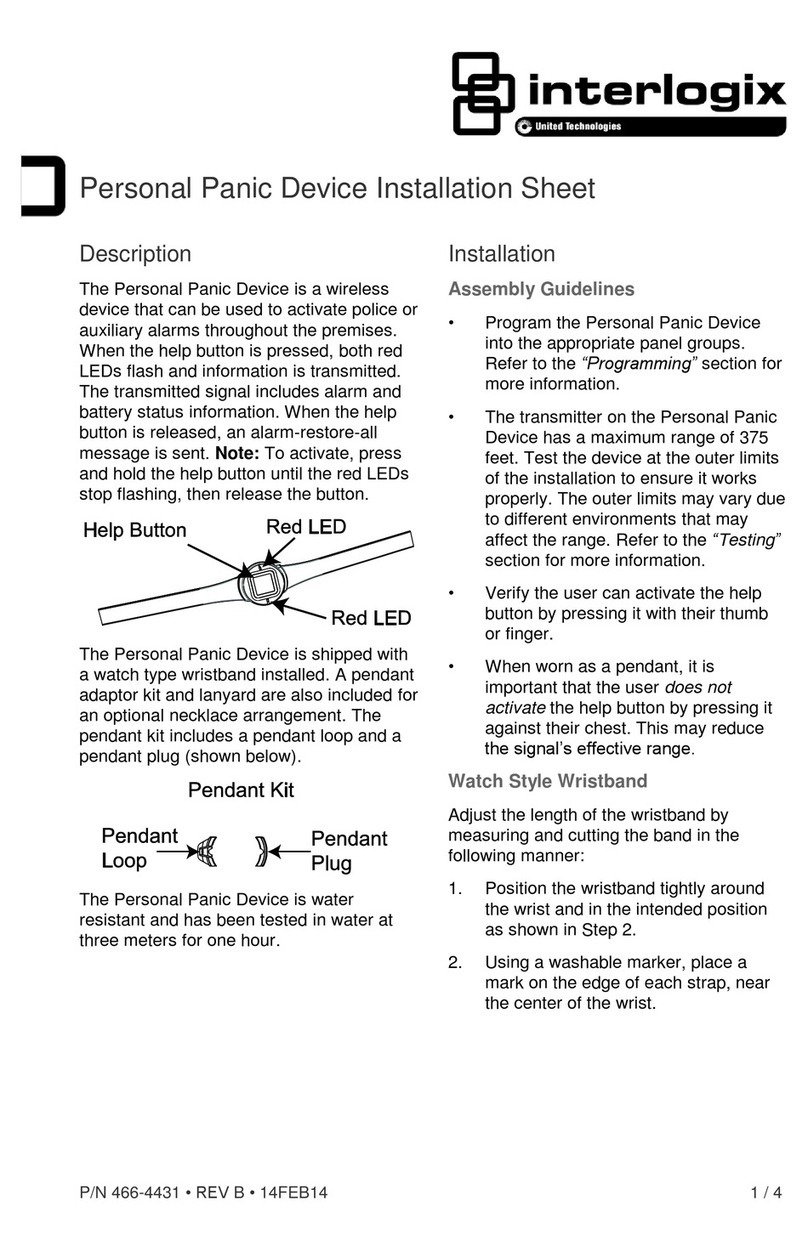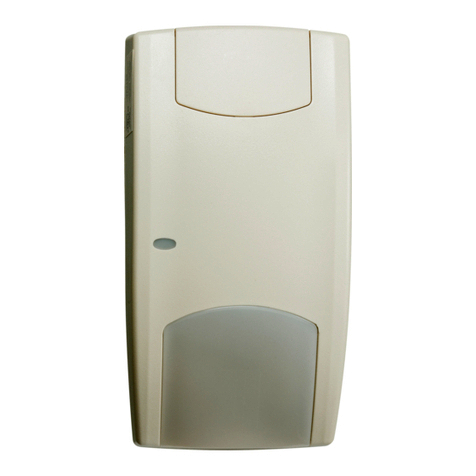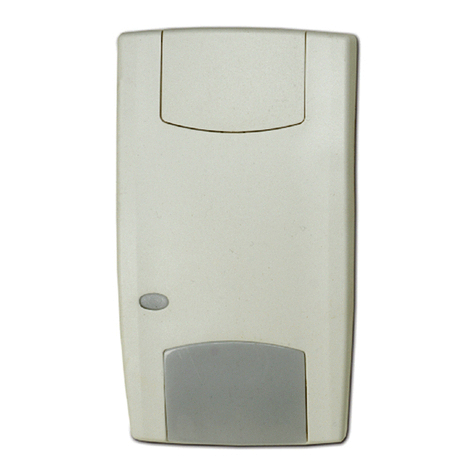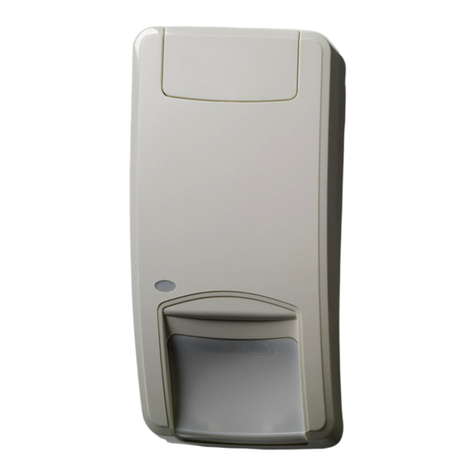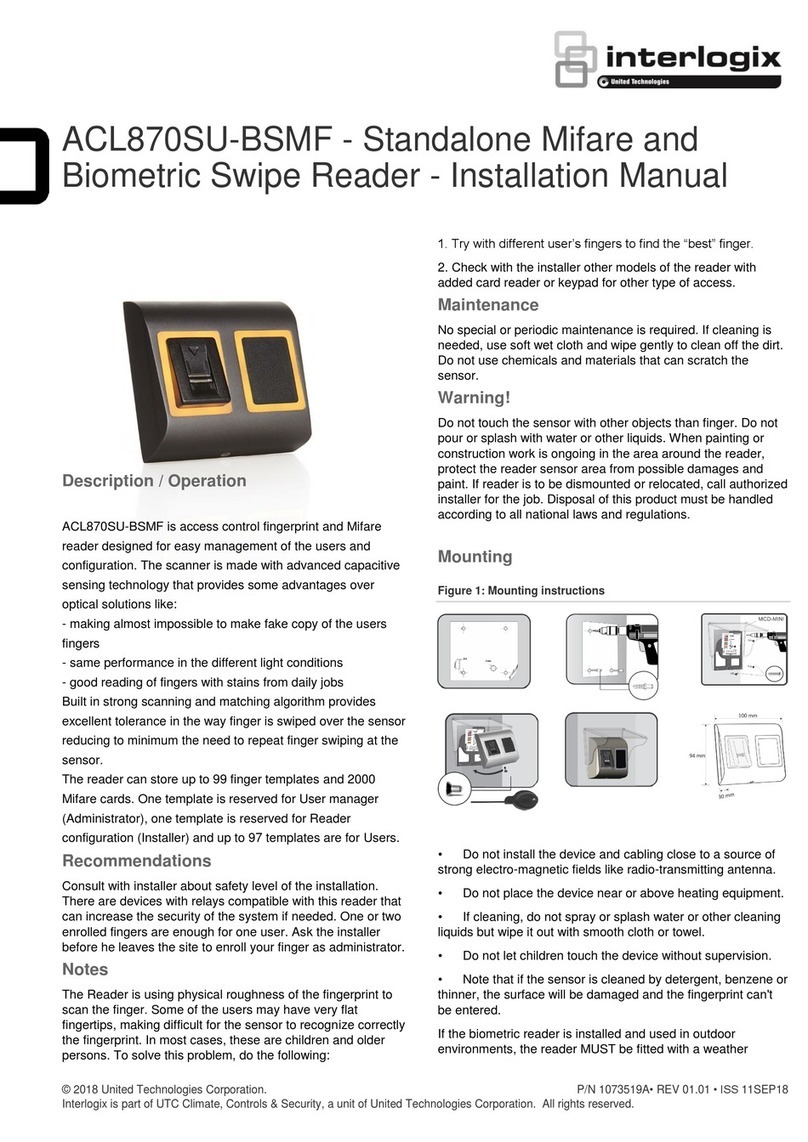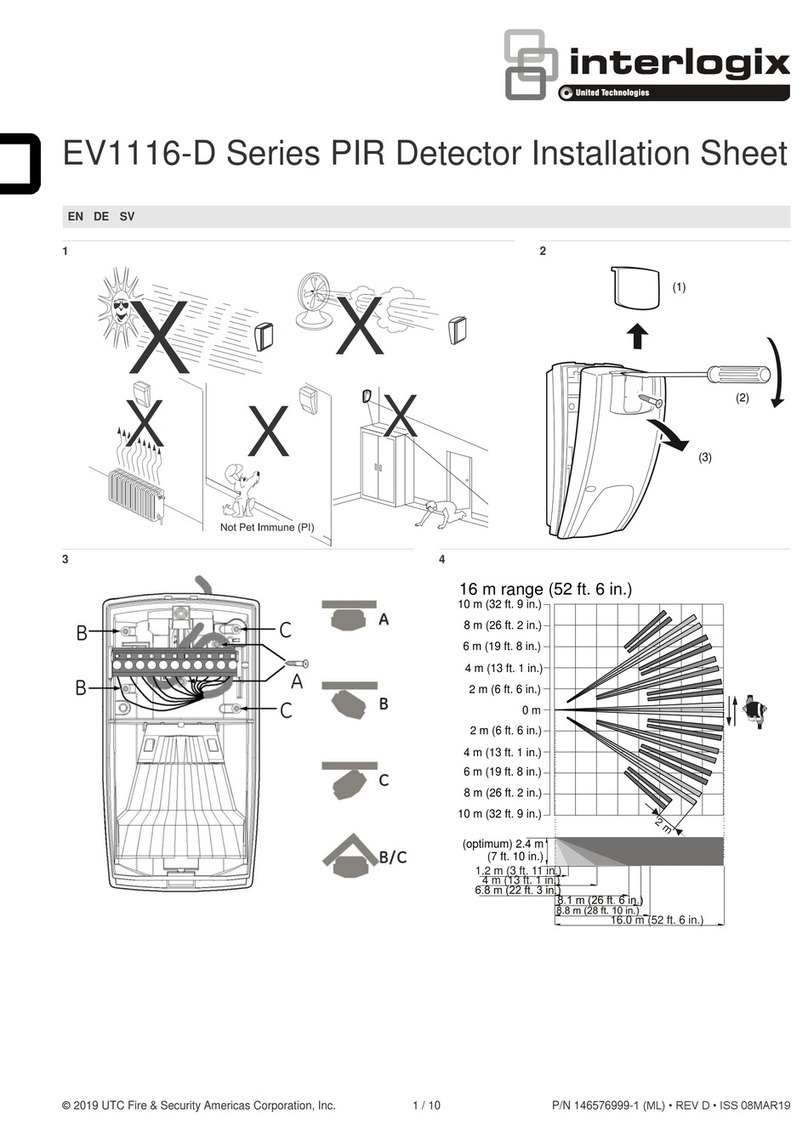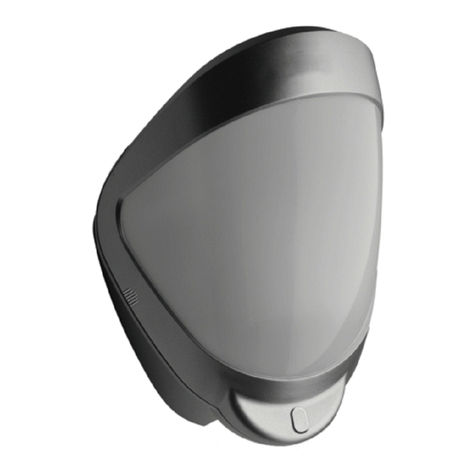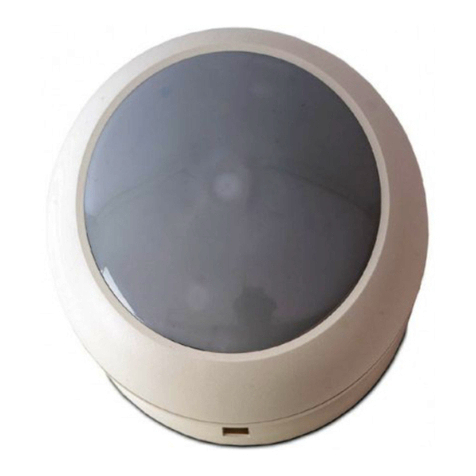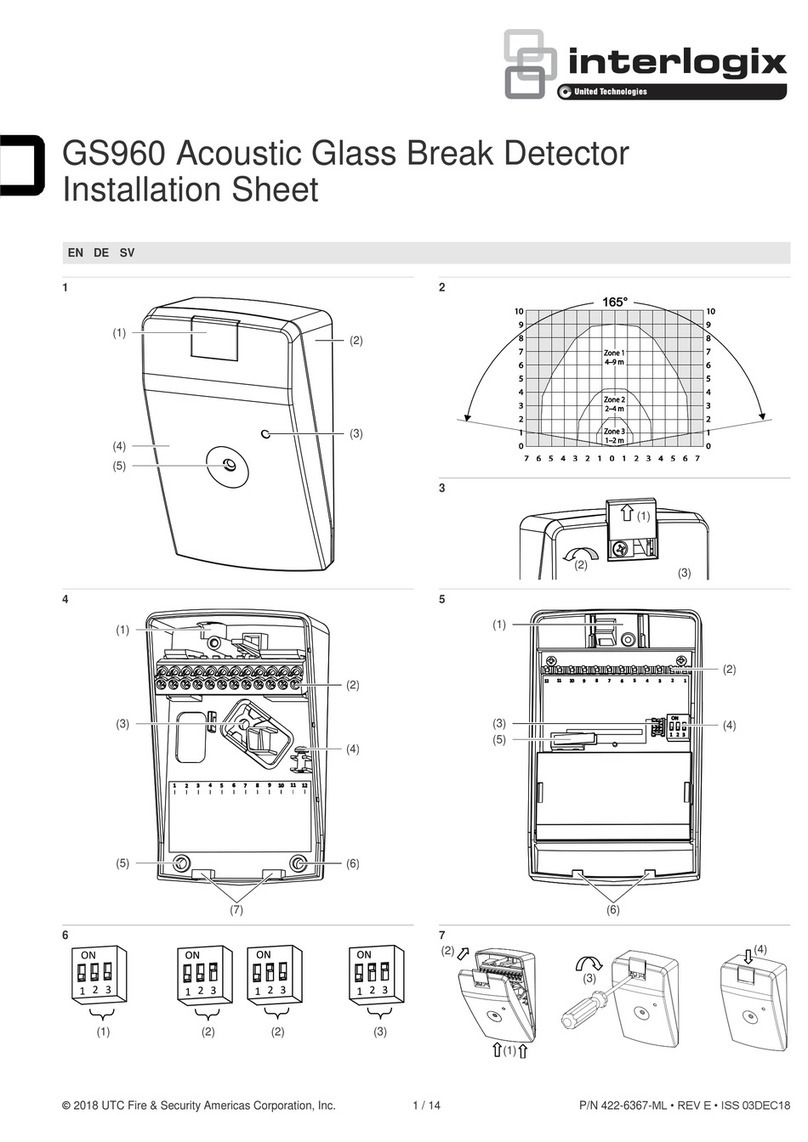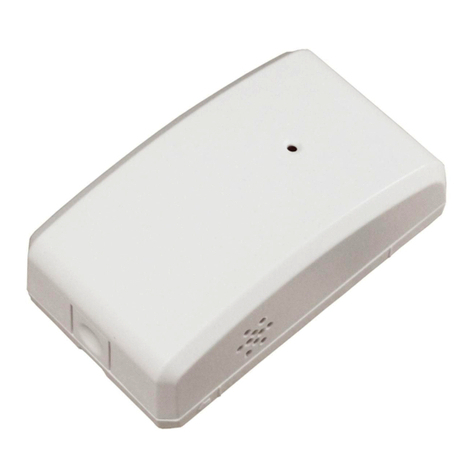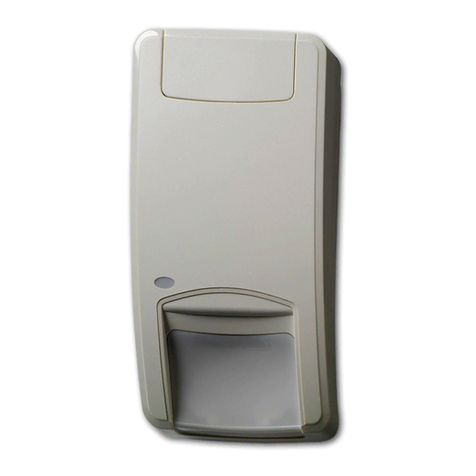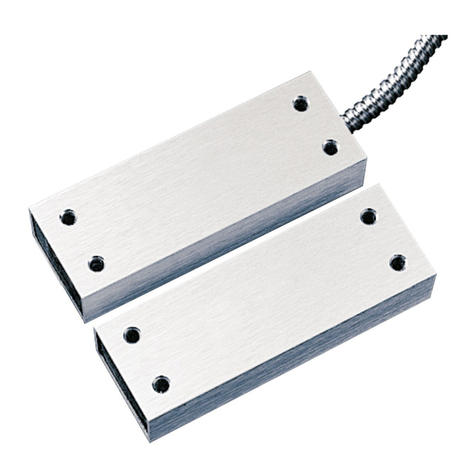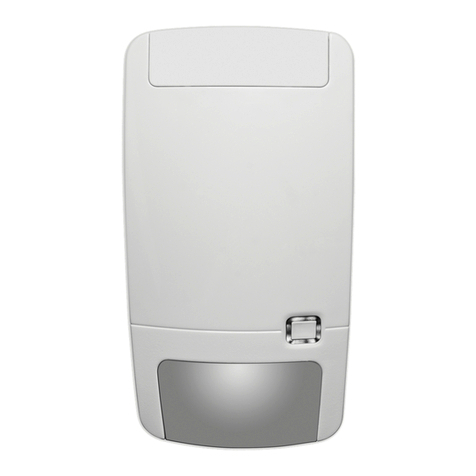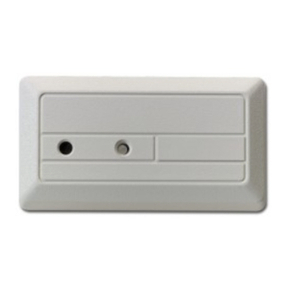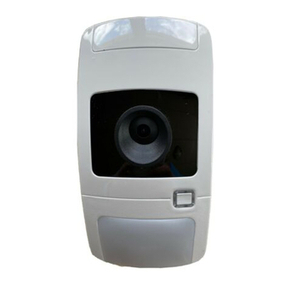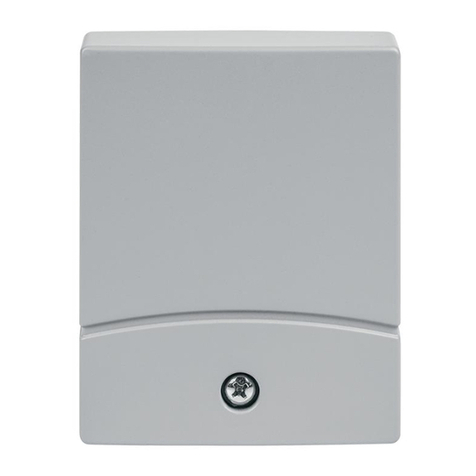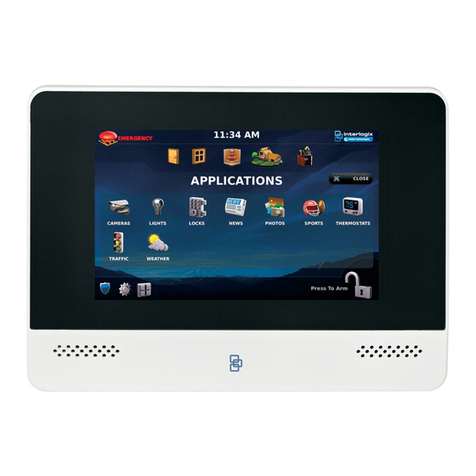
EN: Installation Sheet
Package
The package contains:
•1 x DDI602AM
•1 x drilling template for xing holes
•3 x 31.75 mm wall plugs
•3 x 31.75 mm screws
•1 x lens mask
•2 x additional curtain shutters
•1 x tamper cup
•2 x tamper caps (different lengths)
•1 x plastic locking tool
•1 x installation sheet
•1 x front cover screw cap
Introduction
The DDI602AM Outdoor Dual PIR/AM Detector is an external
motion detector and alarm trigger that uses two independent
passive infrared detectors plus a microwave sensor module.
Programmable options include a variable pulse count and a
choice of three detection ranges: 10m, 20m and 30m.
Mounting the unit
When positioning the detector please consider that the PIR
sensor is more sensitive to a movement across the beams, and
less sensitive to a movement directly towards or away from
the beams; whilst the microwave sensor is more sensitive to
movement towards and away from the sensor.
During installation, protect the electronics against water, as
trapped moisture can affect or damage the unit.
We recommend that the cable entry and screw mounting holes
be sealed from within the detector using acrylic (non-silicone
based) sealants.
Note: When locating the detector, please ensure the detector’s
eld of view is unobstructed.
To mount the detector:
1.Drill the wall to accept the xing screws, the cable entry, and
the tamper cup (if used). See Figures 1 and 3.
A hole-drilling template is provided.
Notes
•Leave a minimum 10 cm (4 inches) clearance above the top of
the detector housing to allow the cover and the detector to be
positioned correctly.
•We recommend using the tamper cup on uneven wall
surfaces. See Fig 3.
•The recommended optimum mounting height for the detector
is 3 m. Whilst it is possible to mount the unit higher, this will
give a reduced detection range and will require the detection
subject to move further through the already reduced detection
area before activation is signalled.
•When mounting the units side by side, a minimum space of 1
m must be left between the detectors and the detectors must
not be looking directly towards each other. No minimum space
is required when mounting the units back to back.
2.Remove the cover assembly by loosening the locking screw.
Squeeze the sides of the front cover to release the internal
catches. The cover hinges from the top and lifts out of the
location slot. See Figure 2.
3.Use a razor knife to open a rubber seal to allow the cabling
into the unit (see Figure 4). Feed standard eight-core or 12-core
alarm cable though the wall and directly into the cable entry.
Bare the wires and connect to the top PCB terminal block
(Figure 15)
Caution: Do not allow the cable to be trapped between the
rear gasket and the mounting surface as this may cause water
ingress. For surface mount cables use the conduit knock-out at
the bottom of the detector. Refer Fig 1 for good and bad cable
routings.
4.Screw the unit to the wall ensuring that the tamper pin is
correctly located and that the tamper micro-switch is closed.
Always ensure the detector base is screwed tightly to the wall
so that the tamper foot is pushed into the rear rubber gasket.
On uneven surfaces use the tamper cup and locate the tamper
foot into the cup. Drilling template is provided.
To aid installation, two spare tamper feet are provided. One
is 1 mm shorter and the other is 1 mm longer than the tamper
foot originally tted. The tamper foot is a push t and can be
removed by carefully pulling it from the pin. See Figure 1.
5.When the detector is aligned, connected, and programmed to
suit the installation:
a. Fit the cover to the detector base.
b. Lightly screw the locking screw.
c. Put the top of the locking tool into the small notch on each
side of the cover, and then apply slight pressure until the cover
locks into the base, as shown in Figure 5.
d. Tighten the locking screw.
Connecting the unit
The DDI602AM includes jumpers that let you congure internal
Triple End-of-Line (TEOL) resistor values, when TEOL resistors
are required. Values are: 1, 2.2, 3.3, 4.7, 5.6, and 6.8 kΩ for
Alarm and Tamper (DEOL resistors). The values are 2.2, 3.3,
4.7, 5.6 and 10kΩ for Fault/Anti-Mask. Figure 15 shows.
When using TEOL connections insert the TEOL jumper and
select the three required resistor values for Fault/A Mask, Alarm
and Tamper.
When using DEOL connections remove the TEOL jumper and
select the two required resistor values for Alarm and Tamper.
Figure 15 shows:
1.TEOL resistor jumpers
2.Wiring points
3.TEOL enable used in conjunction with a jumper at the
required resistance
Alternatively, you can remove the jumpers and connect a
discrete resistor directly to the alarm, tamper or Fault/Anti-Mask
outputs as specied by third-party equipment.
The wiring schematic in Figure 15 shows how to connect and
the table in gure 16 shows how to calculate DEOL and TEOL
values with examples.
